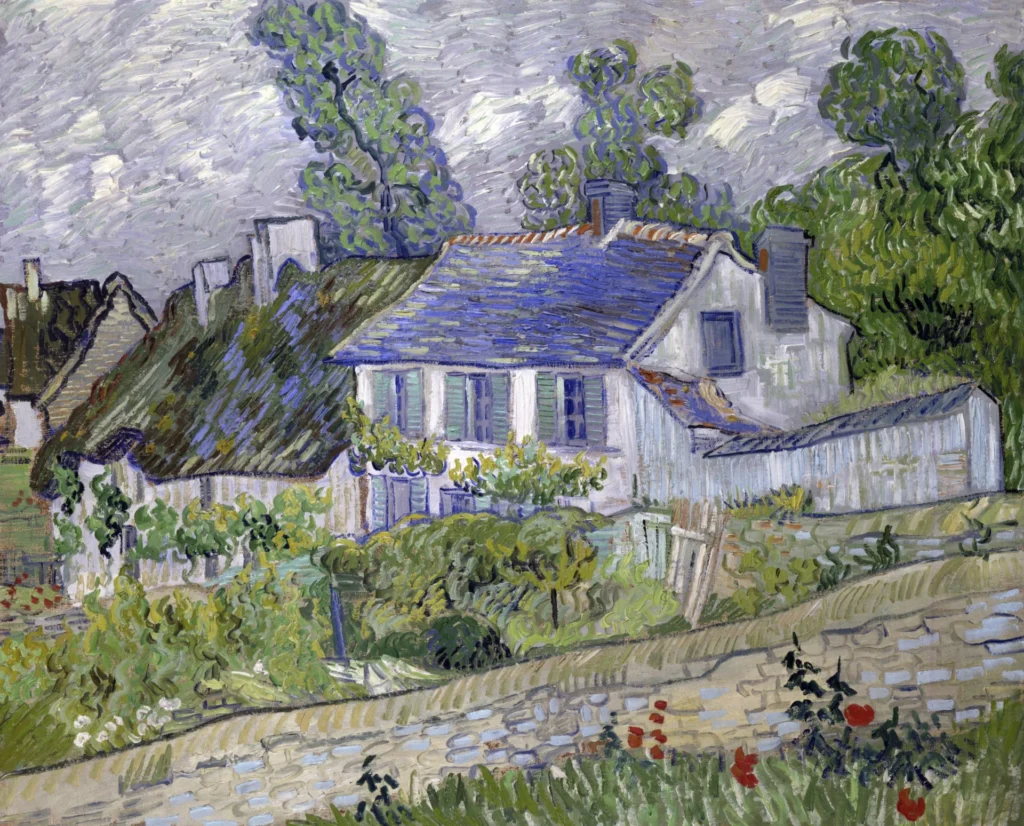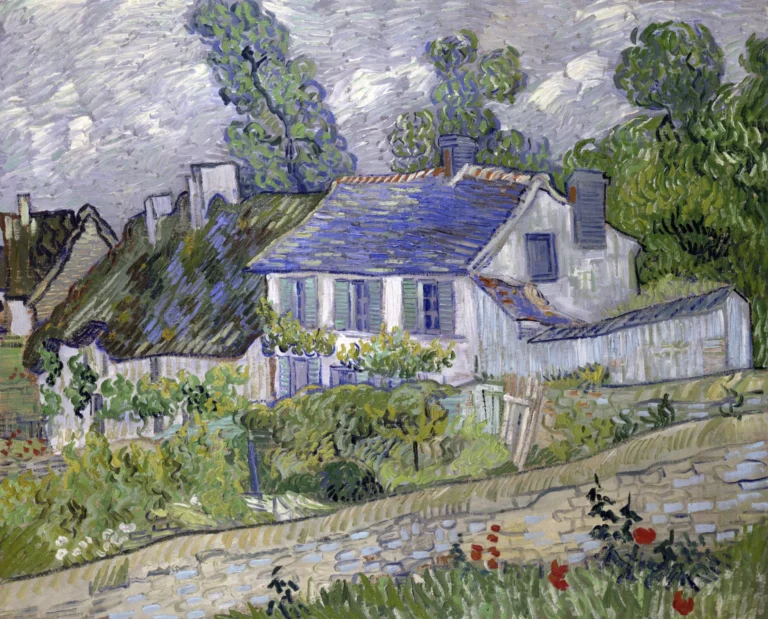Houses At Auvers (1890)
Created in 1890, Houses at Auvers showcases Van Gogh's admiration for the quaint village life in Auvers-sur-Oise. This oil painting features a collection of houses nestled among lush gardens and trees, set against a moody gray-blue sky that enhances the peaceful yet dynamic atmosphere. The contrast between the old thatched roofs and the modern blue tiled roof reflects Van Gogh’s fascination with texture and form. This work is notable for its vigorous brush strokes that animate the landscape and capture the charm of rural France during his inspiring yet troubled period.
May or early June 1890
About the Artwork
Vincent van Gogh painted Houses at Auvers shortly after relocating to the picturesque village of Auvers-sur-Oise in May 1890. With a desperate need for inspiration after his time at the asylum in Saint-Rémy, this vibrant and lively setting gave him a renewed sense of purpose. Van Gogh was captivated by the blend of old and new architecture, which he described as 'profoundly beautiful.' His vigorous brush strokes convey the energy and emotion he felt while capturing this serene environment. During this final burst of productivity, he created over 70 pieces, marking a significant period in his artistic development while grappling with his mental health.
Did You Know
This painting was created during the last months of Van Gogh’s life, at a time when he was both productive and struggling with his mental health. It highlights his passion and dedication to capturing the beauty of life around him despite his personal challenges.
The village of Auvers-sur-Oise inspired Van Gogh significantly, leading him to create over 70 paintings in just a few months. His love for the local landscape and architecture is reflected through diverse approaches in color and texture in his works during this period.
While largely unappreciated during his lifetime, van Gogh’s posthumous acclaim skyrocketed, with Houses at Auvers being a prime example of the brilliance that would later influence countless artists and movements, securing his place as a master of Post-Impressionism.










